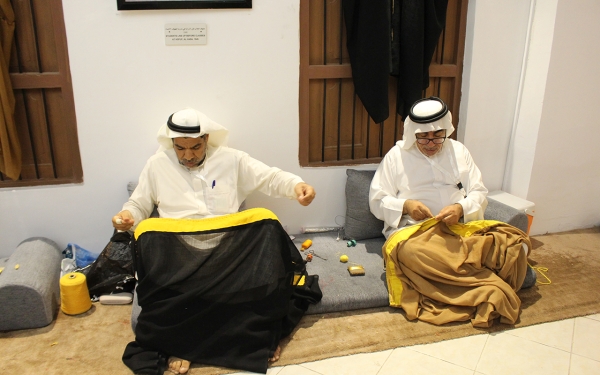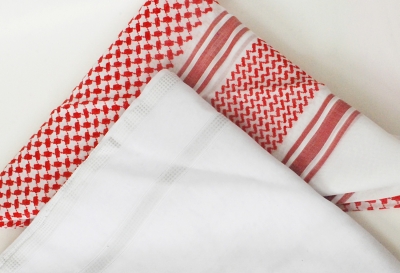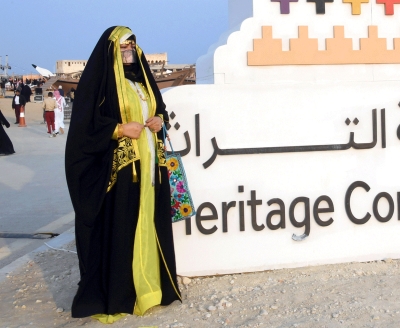

The production of one al-Hasawi Mishlah takes approximately twelve to fifteen days and can extend to about six months. It goes through seven stages, starting with assembly, then the addition of the decorative band, the central piece, embroidery, and the short decorative fringe. Afterward comes the stage of attaching the tassels and buttons, leading to the final stage, where the golden color is emphasized by striking the metallic threads. It is classified based on the type of weaving and embroidery. Some of the types include Marwuba, Mukhawmas, Malaki, Tabuq, Maqta', and Mutawase'. They are embroidered using metallic threads called Zari to decorate the edges and are often adorned with various types of silk threads.
The high cost of the Mishlah can be attributed to the precision of their handwoven craftsmanship, the quality of materials used, and the skill of the maker. Some types of Mishlah even use imported, gilded metallic threads from countries like France, India, or Germany. The Mishlah adorned with German gilded threads are considered precious pieces that many families take pride in possessing.
The Mishlah stands out as one of the garments characterized by deep authenticity. It is considered a cultural and social symbol, often indicating high status and prestige. It is also commonly worn on important occasions, with the choice of its color shades depending on the time, personal preferences, and the atmosphere.
Related quizzes

